Handicrafts like the Gota Patti and Kashidakari are making a comeback thanx to our designers who are showing interest in these intricate works and the common public who are lapping them up in their various forms of application.
India is full of diverse cultures and traditions. We have endless handicrafts in our treasure from handloom fabrics, hand paintings, embroideries, surface works, precious stones, and much more. And that is the reason, our handicrafts are considered the "Heart of India" as they not only represent our culture but also our origin. There are many handworks that have gone extinct with the end of the royal period. Yet there are some crafts that have made a comeback, thanks to our Indian artisans and designers. So, let's talk about some hand embroideries and surface works that are in fashion today and are incorporated within modern silhouettes.
Here are various traditional handworks of India:
1.Gota Patti Work
Gota Patti is also known as 'Lappe ka Kaam' in the local Rajasthani language. It originated in Rajasthan during the Mughal period and is in trend ever since. This work is basically done through the applique technique where stripes are made from metal pieces. Earlier only pure gold and silver were used to make the motifs as a symbol of royalty. Also, it was used for royal and auspicious occasions. But nowadays it is seen in many colours like red, orange, magenta, green, etc and motif designs like leaves, birds, animals, geometric shapes, etc. It can be found on casual kurti sets, saree borders, dupattas, juttis, jewellery, handbags, etc. Also, designers are incorporating gota patti with mirror, chikankari, zardozi, sequins, etc to get an innovative look.
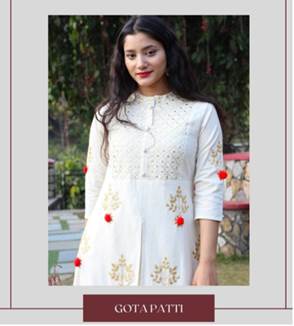
2.Kashidakari
Kashida or Kashidakari is the pure heritage of Kashmir valley. The whole beauty of Kashmir gets carved in this embroidery. Though this art can be traced from the Mughal period, but some say that the locals of Srinagar started this embroidery. It is done with the help of needles filled with vibrant colour palettes. There are several ways to make this embroidery depending on the stitch style and material used like aari or crewelwork, sozni, papier mache, etc. The motifs are mostly nature-inspired like flora, fauna, fruits, etc. Ideally used on pashmina shawls, jackets, sarees, etc, today this embroidery can also be found in ethnic dresses, lehengas, footwear, upholstery, etc.
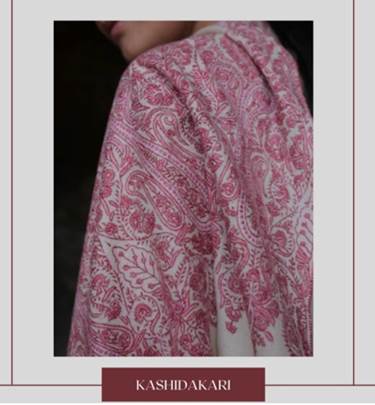
3.Rabari Embroidery
This embroidery is a type of Kutchi embroidery having its roots in the Rabari nomadic community. The Rabaris had migrated from Rajasthan many years ago and settled down in the Kutch region of Gujarat. It is a very intricate embroidery type and source of living for these people. This embroidery is made with mirrors in different shapes and sizes fixed through the chain stitch on the fabric. Motifs that are used primarily are leaves, elephants, dancing peacocks, depicting daily lives of the people, animals, flowers, and many more. Earlier, this work was only done on torans, authentic Rabari costumes, footwear. But today you can get this work in ethnic suit sets, handbags, western tunics, jackets, sarees, blouses, lehengas, etc.
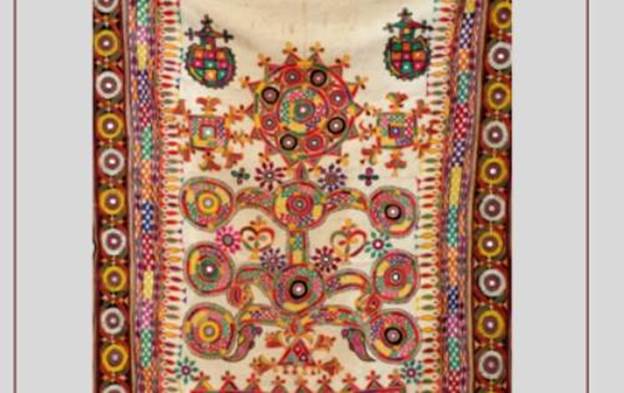
4.Gara Craft
The Gara craft, a very rare form of hand embroidery came to India in the 19th century through the silk route. Later on, the Parsi communities brought this craft to Gujarat and Mumbai. This embroidery is a beautiful combination of various cultures like Persian, Chinese, European, and Indian. The Parsis wore this artwork at the time of auspicious occasions in the form of sarees, shawls, etc. It depicts natural elements spread all over a piece of fabric in bright pastel colours through thread work. Gara had almost gone extinct, but some designers brought it back in fashion with a modern touch to it. Today this embroidery can be seen on sarees, partywear, clutches, footwe.

5.Aughi (Uttar Pradesh)
Aughi, an ancient embroidery craft, had gained huge popularity during the Mughal period due to its fine handwork. It had originated in Lucknow, Uttar Pradesh, and was used to adorn Persian footwear of the royalties. Very fine embroidery was created on leather and velvet footwear from pure gold and silver threads. Motifs created were vines, tiny flowers, traditional designs, etc. This footwear was worn by both men and women of the royal families. Today, we cannot find the authentic version of this embroidery anymore but still it can be found in bridal footwear for men and clutches with sequins and beads.
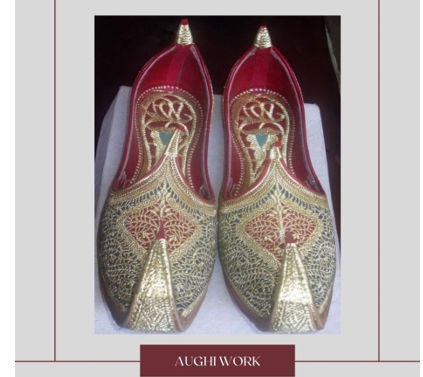
So, these were some of the traditional handworks back in trend and yet there are many more waiting in line to be explored. We should try to buy these embroidered outfits directly from the artisans and give them an active livelihood. Also, government firms try their best to help the artisans and other local karigars get proper recognition for their heritage crafts on the international platform.



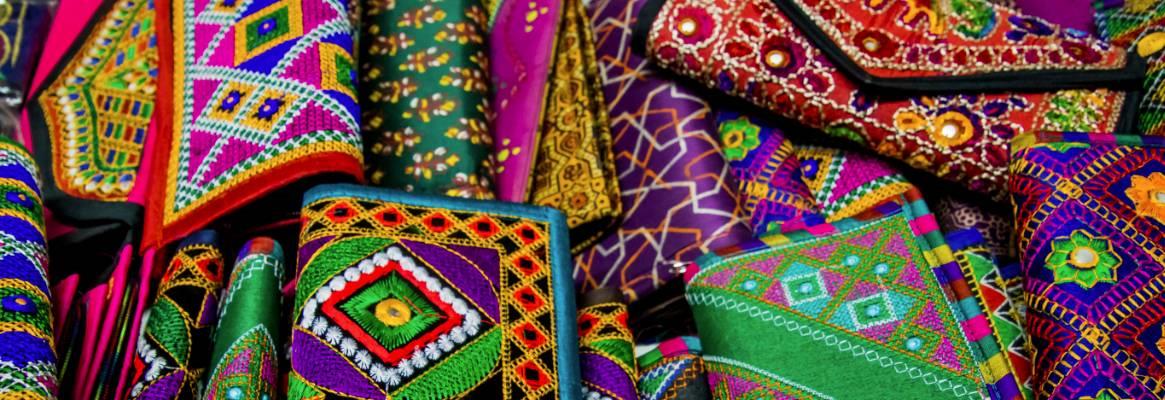




Comments